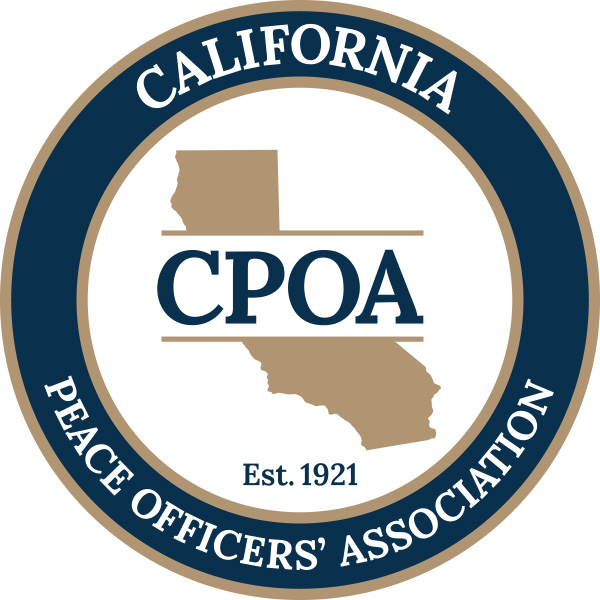Provided by CPOA Legal Counsel, James R. Touchstone and Richard A. Lucero, Jones & Mayer
The pandemic circumstances we all face are placing tremendous demands on law enforcement personnel. Among organizational priorities is determining how to apply law enforcement authority under conditions not ordinarily encountered during general agency operations. This alert is intended to bring together statutory authority and Executive Orders as an accessible reference for law enforcement leaders.
Existing Authority to Enforce Health Officer Orders
The Health & Safety Code authorizes health officers to take necessary steps to prevent the spread of infectious disease. (See Health & Safety Code § 120175). The Government Code makes provision for both county and municipal law enforcement to execute the orders of the local health officer for the purpose of preventing the spread of communicable disease. This authority for a Sheriff is found in Government Code section 26602. Similarly, Government Code section 41601 vests in municipal Police Chiefs the equivalent general law powers conferred upon Sheriffs.
Consistent with these provisions, Health & Safety Code section 101029 also grants to the Sheriff of a county the authority to enforce within the county all orders of the health officer for the same purpose of preventing the spread of contagious disease. The section also extends that authority to municipal peace officers within their jurisdiction.
Each of these code sections appears below in their entirety:
Health & Safety Code section 120175. Prevention of spread of communicable diseases: Each health officer knowing or having reason to believe that any case of the diseases made reportable by regulation of the department, or any other contagious, infectious or communicable disease exists, or has recently existed, within the territory under his or her jurisdiction, shall take measures as may be necessary to prevent the spread of the disease or occurrence of additional cases.
Government Code section 26602. Prevention and suppression of affrays, etc.; Investigation of public offenses: The sheriff shall prevent and suppress any affrays, breaches of the peace, riots, and insurrections that come to his or her knowledge, and investigate public offenses which have been committed. The sheriff may execute all orders of the local health officer issued for the purpose of preventing the spread of any contagious or communicable disease.
Government Code section 41601. Suppression of riot, etc.; Equivalence to sheriff’s powers and protection: For the suppression of riot, public tumult, disturbance of the peace, or resistance against the laws or public authorities in the lawful exercise of their functions, and for the execution of all orders of the local health officer issued for the purpose of preventing the spread of any contagious, infectious, or communicable disease, the chief of police has the powers conferred upon sheriffs by general law and in all respects is entitled to the same protection.
Health & Safety Code section 101029. Enforcement of local health officer’s orders for preventing spread of contagious, infectious, or communicable disease: The sheriff of each county, or city and county, may enforce within the county, or the city and county, all orders of the local health officer issued for the purpose of preventing the spread of any contagious, infectious, or communicable disease. Every peace officer of every political subdivision of the county, or city and county, may enforce within the area subject to his or her jurisdiction all orders of the local health officer issued for the purpose of preventing the spread of any contagious, infectious, or communicable disease. This section is not a limitation on the authority of peace officers or public officers to enforce orders of the local health officer. When deciding whether to request this assistance in enforcement of its orders, the local health officer may consider whether it would be necessary to advise the enforcement agency of any measures that should be taken to prevent infection of the enforcement officers.
The violation of orders of health officers issued under these provisions is a misdemeanor. The section giving this authority associated with health officer orders appears below as well as a section pertaining to breach of any legal duty related to preserving the public health.
Health & Safety Code section 120295. Punishment for violation of chapter; Separate offenses: Any person who violates Section 120130 or any section in Chapter 3 (commencing with Section 120175, but excluding Section 120195), is guilty of a misdemeanor, punishable by a fine of not less than fifty dollars ($50) nor more than one thousand dollars ($1,000), or by imprisonment for a term of not more than 90 days, or by both. He or she is guilty of a separate offense for each day that the violation continued.
Health & Safety Code section 131082. Neglect of or refusal to perform duty as misdemeanor: Every person charged with the performance of any duty under the laws of this state relating to the preservation of the public health, who willfully neglects or refuses to perform the same, is guilty of a misdemeanor.
State of California Executive Order
N-25-20
In addition to what exists in standing statutory authority, on March 12, 2020, the Governor issued an order directly addressing compliance with orders issued by state and local health officials. This portion of the order appears below:
Executive Order N-25-20, paragraph one: All residents are to heed any orders and guidance of state and local public health officials, including but not limited to the imposition of social distancing measures, to control the spread of COVID-19.
Pursuant to Government Code section 8567, subdivision (a), these executive orders have the “force and effect of law.” Similar to the orders from a health officer, the orders carry with them misdemeanor enforcement authority. The relevant code section appears below:
Government Code section 8665. Persons violating or neglecting to obey lawful order or regulation; Fine and imprisonment: Any person who violates any of the provisions of this chapter or who refuses or willfully neglects to obey any lawful order or regulation promulgated or issued as provided in this chapter, shall be guilty of a misdemeanor and, upon conviction thereof, shall be punishable by a fine of not to exceed one thousand dollars ($1,000) or by imprisonment for not to exceed six months or by both such fine and imprisonment.
Training Under Emergency Circumstances
The issues implied from the authority sections noted above represent examples of urgent training demands facing law enforcement agencies as they address the COVID-19 pandemic. Issues include safety-oriented changes in policing procedure, modifications in call management, use of protective equipment, adjustments to arrest and booking methods, and medical considerations. In addition, employee and family illness, health-based course postponements, ongoing community service demands, and isolation of employees having suffered an exposure are all barriers to the continuity of the customary level of law enforcement training.
In recognition of these very real constraints, POST has issued Bulletin No. 2020-14. The bulletin indicates that POST will consider the aggregation of COVID-19 related circumstances for any department unable to sustain training compliance. The bulletin also recommends maintaining detailed records of COVID-19 impacts causing the lack of compliance with respect to training for consideration during future audit processes.
In addition to determinations made by POST, the records may also become important going forward in defending agency actions in future civil litigation. The information may be needed in responding to any claims where failure to train is part of any lawsuit.
Changes in Job Duties
As we meet the demands tied to what is taking place, effective and accurate communication with the members of law enforcement agencies is extremely critical, especially without necessarily being able to rely upon personal interaction. Personnel having an understanding of organizational decisions will be part of how law enforcement collectively moves forward. Valid communication will also better inform agency decisions. The urgency and nature of the situation, however, may prevent employee involvement at a level agencies would normally prefer with determinations, such as modifications in job duties. Job duties are among changes that may be implemented on an emergency basis. However, agencies need to remain cognizant that Government Code section 3504.5 requires the city “shall provide notice and opportunity to meet at the earliest practicable time.”
CalPERS Circular Letter – Executive Order N-25-20 Impact on Retired Annuitants
On March 18, 2020, CalPERS distributed a circular letter to all CalPERS employers to inform of the impact of the Governor’s Executive Order N-25-20 on CalPERS retirees employed as retired annuitants with all CalPERS employers.
- Work Hour Limitation Exceptions
The letter explained that Governor Newsom issued Executive Order N-25-20 to further enhance California’s ability to respond to COVID-19. The letter explained that, consistent with applicable federal law, and “to ensure adequate state staffing to expedite emergency response and recovery, the work hour limitations for retired annuitants are suspended from the date the state of emergency was declared until the state of emergency is lifted.”
“The intent of the executive order is to suspend reinstatement and the retired annuitant work hour limitation of 960 hours per fiscal year during the state of emergency. Any hours worked by a retired annuitant to ensure adequate staffing during the state of emergency will not be counted toward the 960-hour limit for the fiscal year.”
- Wait Period Exceptions
The letter also states: “Under this executive order, the 180-day break in service requirement under Government Code section 7522.56(f) is also suspended for retired annuitants hired to ensure adequate staffing during the state of emergency.”
“In addition, under subdivision (c) of section 586.2 of Title 2 of the California Code of Regulations (CCR), the declaration of a state of emergency exempts retired annuitants from the 60-day separation in service requirement under subdivision (a)(2) of CCR section 586.2. However, please be aware, the prohibition under subdivision (a)(1) of CCR section 586.2 on any predetermined agreement between an employer and an impending retiree who has not attained normal retirement age, continues to remain in effect, consistent with federal law.”
The letter explains that the start date for the state of emergency was March 4, 2020, and that the suspension of the retired annuitant work hour limitation and wait period exceptions “will remain in place until the state of emergency is lifted.”
- Continued Compliance
Agencies must continue to enroll, and report retired annuitants to CalPERS. The remaining working after retirement provisions in Government Code sections 21221(h), 21224(a), and 7522.56(e) continue to apply:
- Compensation for the appointment shall not exceed the maximum monthly base salary paid to other employees performing comparable duties as listed on a publicly available pay schedule divided by 173.333 to equal an hourly rate.
- A retired annuitant shall not receive any benefit, incentive, compensation in lieu of benefits, or other form of compensation in addition to the hourly pay rate.
The letter notes that the emergency proclamation applies to work performed by a retired annuitant hired to ensure adequate staffing during the state of emergency. The letter explains that CalPERS employers must notify the director of the California Department of Human Resources of any individual employed pursuant to these waivers. Notification should be sent to CAStateofEmergency@calhr.ca.gov.
The letter also explains that “CalPERS will continue to monitor the work hours for retired annuitants covered by this order and send communication to confirm when a violation is found and whether it complies with these exceptions.”
Employers with questions are to call CalPERS Customer Contact Center at 888 CalPERS (or 888-225-7377).
State of California Executive Order N-33-20 – Stay At Home Order
On March 19, 2020, Governor Gavin Newsom issued Executive Order N-33-20, effective immediately, and to stay in effect until further notice. The Executive Order requires all California residents to stay at home or their place of residence, except as needed to maintain continuity of operations of certain specified federal critical infrastructure sectors. [1] The Cybersecurity & Infrastructure Security Agency (“CISA”) provided a letter on March 19, 2020 attempting to clarify what are considered “federal critical infrastructure” workers. CISA notes that it analysis is advisory, not mandated. Allowances are made for when people need to leave their homes or places of residence to obtain necessities such as food, prescriptions, and health care. However, people doing so should at all times practice social distancing.
Executive Order N-33-20 Details
The Executive Order is in four parts. The first part incorporates public health directives from a corresponding March 19, 2020 order from the State Public Health Officer and Director of the California Department of Public Health. Part 1) states: “To preserve the public health and safety, and to ensure the healthcare delivery system is capable of serving all, and prioritizing those at the highest risk and vulnerability, all residents are directed to immediately heed the current State public health directives,” which the Governor ordered the Department of Public Health to develop for the current statewide status of COVID-19. These State public health directives are detailed in an “Order of the State Public Health Officer,” and comprise the remainder of Part 1) of Executive Order N-33-20.
The State Public Health Officer and Director of the California Department of Public Health orders “all individuals living in the State of California to stay home or at their place of residence except as needed to maintain continuity of operations of the federal critical infrastructure sectors…” The State Public Health Officer adds that, in consultation with the Director of the Governor’s Office of Emergency Services, the Officer “may designate additional sectors as critical in order to protect the health and well-being of all Californians.”
The State Public Health Officer’s order also declares: “Pursuant to the authority under the Health and Safety Code 120125, 120140, 131080, 120130(c), 120135, 120145, 120175 and 120150, this order is to go into effect immediately and shall stay in effect until further notice.”
The Health Officer’s order then discusses the critical infrastructure sectors, stating: “The federal government has identified 16 critical infrastructure sectors whose assets, systems, and networks, whether physical or virtual, are considered so vital to the United States that their incapacitation or destruction would have a debilitating effect on security, economic security, public health or safety, or any combination thereof. I order that Californians working in these 16 critical infrastructure sectors may continue their work because of the importance of these sectors to Californians’ health and well-being.”
The order mentions statewide consistency in the next paragraph, declaring: “This Order is being issued to protect the public health of Californians. The California Department of Public Health looks to establish consistency across the state in order to ensure that we mitigate the impact of COVID-19. Our goal is simple, we want to bend the curve, and disrupt the spread of the virus.”
The State Public Health Officer’s order then states that people may leave their homes for necessities, though they are to practice social distancing: “The supply chain must continue, and Californians must have access to such necessities as food, prescriptions, and health care. When people need to leave their homes or places of residence, whether to obtain or perform the functions above, or to otherwise facilitate authorized necessary activities, they should at all times practice social distancing.”
The Executive Order explains that the above State public health directives from the State Public Health Officer are consistent with the March 19, 2020 Memorandum on Identification of Essential Critical Infrastructure Workers During COVID-19 Response, located online at: https://covid 19.ca.gov/.
Part 2) of the Governor’s Executive Order N-33-20 declares: “The healthcare delivery system shall prioritize services to serving those who are the sickest and shall prioritize resources, including personal protective equipment, for the providers providing direct care to them.”
Part 3) provides that “[t]he Office of Emergency Services is directed to take necessary steps to ensure compliance with this Order.”
Part 4) declares: “This Order shall be enforceable pursuant to California law, including, but not limited to, Government Code section 8665.”
Executive Order N-33-20 then orders filing of the order, and widespread publicity and notice be given of the Order.
The Order concludes by noting that it “is not intended to, and does not, create any rights or benefits, substantive or procedural, enforceable at law or in equity, against the State of California, its agencies, departments, entities, officers, employees, or any other person.”
HOW THIS AFFECTS YOUR AGENCY
Our full intention as we respond to this evolving situation is that we will be able to implement health mandates with cooperative outcomes. Where a voluntary resolution cannot be attained, these notes are intended to contribute to the framework of information law enforcement leaders have available in approaching these situations.
As always, if you wish to discuss this matter in greater detail, please feel free to contact Jim Touchstone at (714) 446–1400 or via email at jrt@jones-mayer.com, or Rich Lucero at ral@jones-mayer.com
Information on www.jones-mayer.com is for general use and is not legal advice. The mailing of this Client Alert Memorandum is not intended to create, and receipt of it does not constitute, an attorney-client-relationship.
[1] The current critical infrastructure sectors are outlined at https://www.cisa.gov/identifying-critical-infrastructure-during-COVID-19.


